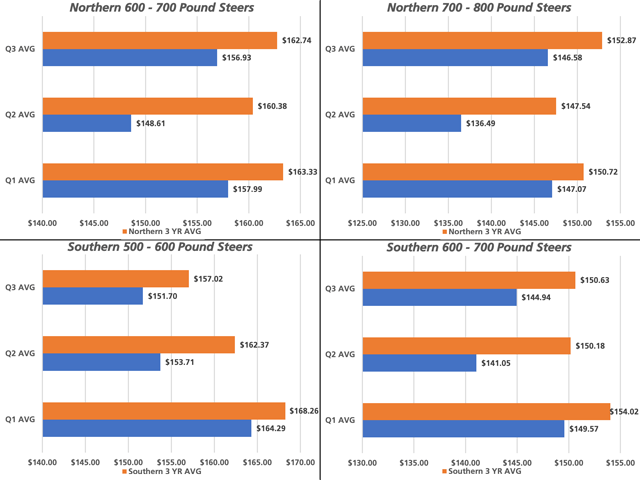Call the Market
Finding the Right Time to Market Your Calves
Around this time of year there are very few cow-calf producers that are comfortable with the markets. Turning on the news at noon to hear the market report becomes a necessity as well as catching the market's close before one day rolls into the next. Whether an operation is anxiously waiting to market calves, has already sold their calves or is just trying to stay attune to the market, tensions are high around the cattle market's fall run.
For someone who hasn't been involved with the industry for long (or from the outside looking in) that may seem peculiar. Cattle are marketed throughout every month of the year and nearly every day, so why does the fall run matter so much?
The full run has a way of pulling on cattlemen's every emotion. Glistening as a harmonious time, there's something genuinely patriotic about seeing cattle pots lined up and hitting the road to feedlots scattered across the U.S., and something is innately different about trailing a healthy calf crop into the corrals for the last time of the year.
However, while the fall run can bring a savoring sense of accomplishment and pride, it can also be offset with immense pressure and challenges. The futures market can swing, corn prices can rally and buyers can become hesitant as finding available funding becomes increasingly difficult.
P[L1] D[0x0] M[300x250] OOP[F] ADUNIT[] T[]
These challenges aren't new and they certainly aren't the only outside factors that can affect the demeanor of the marketplace.
Regardless of what may go right or wrong before shipping your calves, the fact is that, until those calves are committed to a buyer, they are yours and the asset is still holds the ability to be marketed.
In anxious anticipation of the fall run and wondering how the market would fare, I did some studying on steer-calf prices and the time of year they sell in. I broke the market into two separate demographics and then further into different weight brackets. The North region consisted of Montana, Wyoming, Colorado, North Dakota, South Dakota, Nebraska and Iowa, and the Southern region included New Mexico, Texas, Oklahoma, Kansas and Missouri. For the North, I looked at two different weight groups: steers weighing 600 to 700 pounds and steers weighing 700 to 800 pounds. As for the South, I analyzed steers weighing 500 to 600 pounds, along with steers weighing 600 to 700 pounds. (The image attached with this article shares a quick illustration of the information found.)
I found it incredibly interesting that the two different regions have starkly different trends. For Northern producers, out of the three quarters compared, the price variation between selling in the first quarter of the year compared to the third quarter of the year are relatively small. While in the South, the price advantage of selling in the first quarter of the year ranges from $0.05 to $0.11 higher.
As producers reflect upon how their calves sold this year, it's important to look at historical trends and question your marketing strategy. Calves are assets, but they must be given a fair shot in order to perform in today's dynamic marketplace.
That draws us to next series of questions: what assets (cattle) do you have to sell, where are you selling them, how are you selling them and why? It may be time for your operation to sit down and honestly answer those questions.
Upon hearing how other cattlemen made out this fall, implementing a new marketing strategy may not be a far-fetched idea. Being consistent with your marketing strategy is crucial, but understanding how the market usually performs for different weight groups and in different regions is inherently important. It's hard to compare 2020 to years past, and it's even hard to compare the second half of 2019 to years past as the market was saturated with hysteria following Tyson Foods' packing plant fire in Holcomb, Kansas. However, conclusions can still be drawn from years past and if you're displeased with how your calves have been selling it may be an opportunistic time to reevaluate your marketing strategy.
ShayLe Stewart can be reached at ShayLe.Stewart@dtn.com
(c) Copyright 2020 DTN, LLC. All rights reserved.






